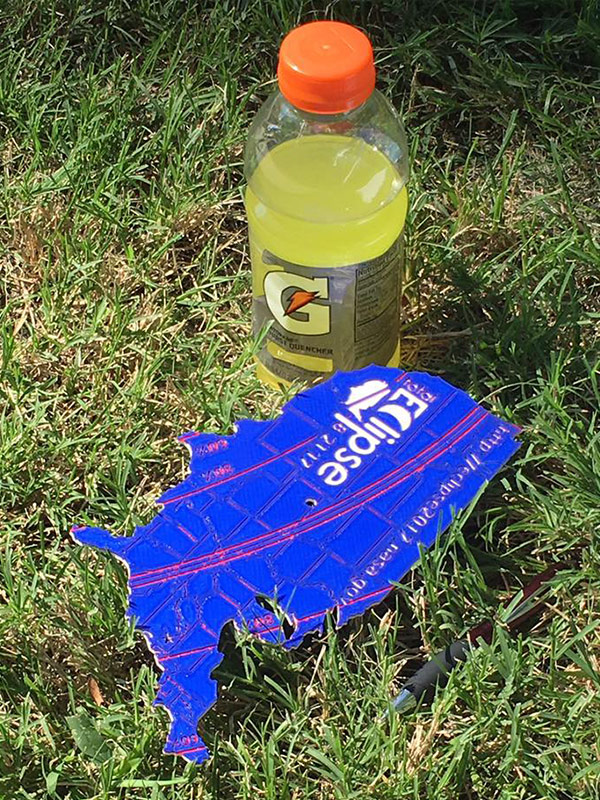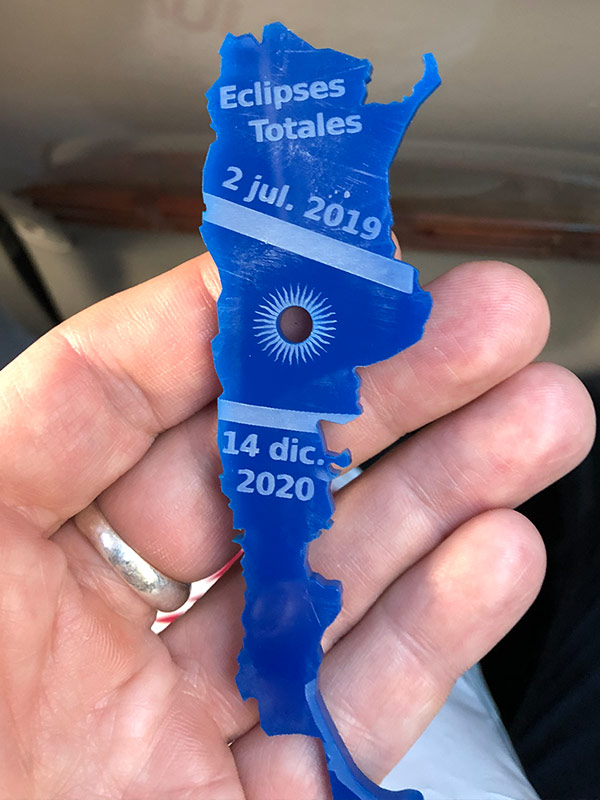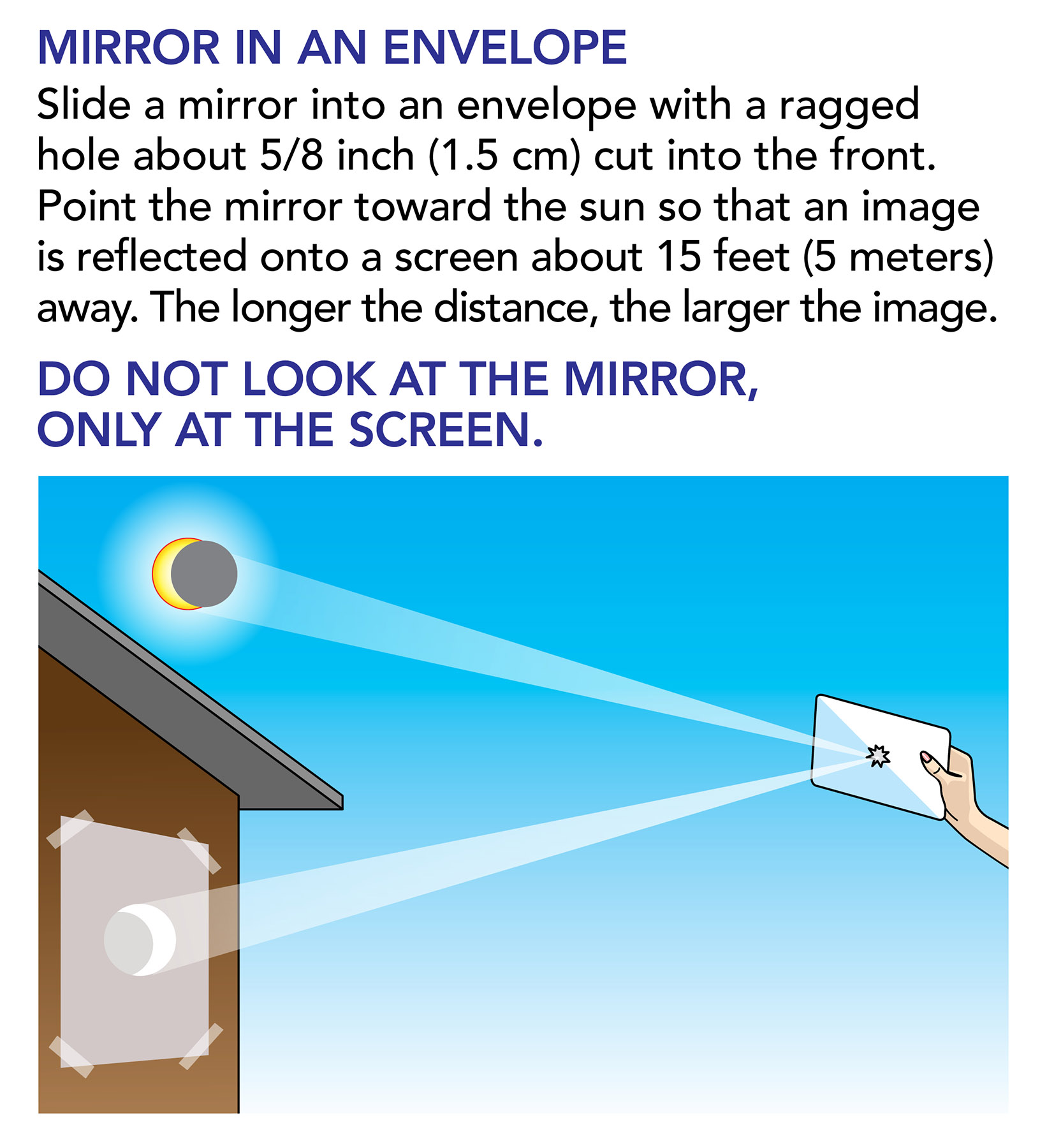Solar Eclipse Eye Safety
Eye protection is needed for solar eclipses only. Lunar eclipses can be viewed without special eye protection.
Looking directly at the Sun is unsafe except during the brief total phase (“totality”) of a total solar eclipse, when the Moon entirely blocks the Sun’s bright face, which happens only within the narrow path of totality.
This is a brief overview. Please consult recommended sources for full details.
Photo Credit: Evan Zucker



All types of Lunar Eclipses are safe to look at without special eye protection.
Looking directly at the sun is unsafe except during the brief total phase of a total solar eclipse (“totality”), when the moon entirely blocks the sun’s bright face, which will happen only within the narrow path of totality. There is no safe time during an annular solar eclipse.
Be sure to carefully read the details to understand how to protect your eyes!
Homemade filters or ordinary sunglasses, even very dark ones, are not safe for looking at the uneclipsed or partially eclipsed Sun.
Lunar eclipses are safe to view without eye protection.
Use eye safety when viewing:
- Partial solar eclipses
- Annular (ring) solar eclipses
- such as the one on October 14, 2023 (with totality crossing parts of the Western USA, Central America, Colombia, and Brazil)
- Total solar eclipses if not in the path of totality, or before and after totality
- such as the one on April 8, 2024 (with totality crossing parts of Mexico, the USA, and Canada)
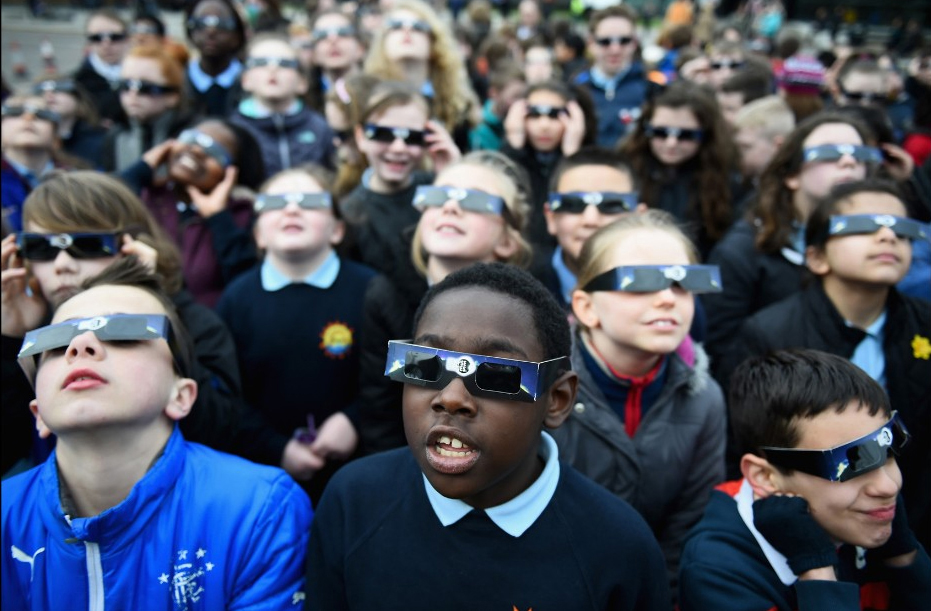
In these situations, there is no time when it is safe to look directly at the Sun without using a special-purpose solar filter that complies with the transmission requirements of the ISO 12312-2 international standard.
PROTECT YOUR EYES!
How can I view a solar eclipse safely?
The most important this to remember is that it is never safe to look directly at the uneclipsed or partially eclipsed sun without the proper safety glasses. The only time you can look at the sun without safety glasses is during the brief moments of totality. There is a lot of great information at NASA and the AAS (American Astronomical Society) about how to safely look directly at the sun as well as indirectly. For all these points and more check out:
All solar eclipses require safety glasses. ONLY during the totality phase of a total solar eclipse is it OK to remove. Be sure to learn how to safely do this!
CREDIT: Music Credit: Chic to Chic by Piero Piccioni • Video credit: NASA’s Goddard Space Flight Center/SVS
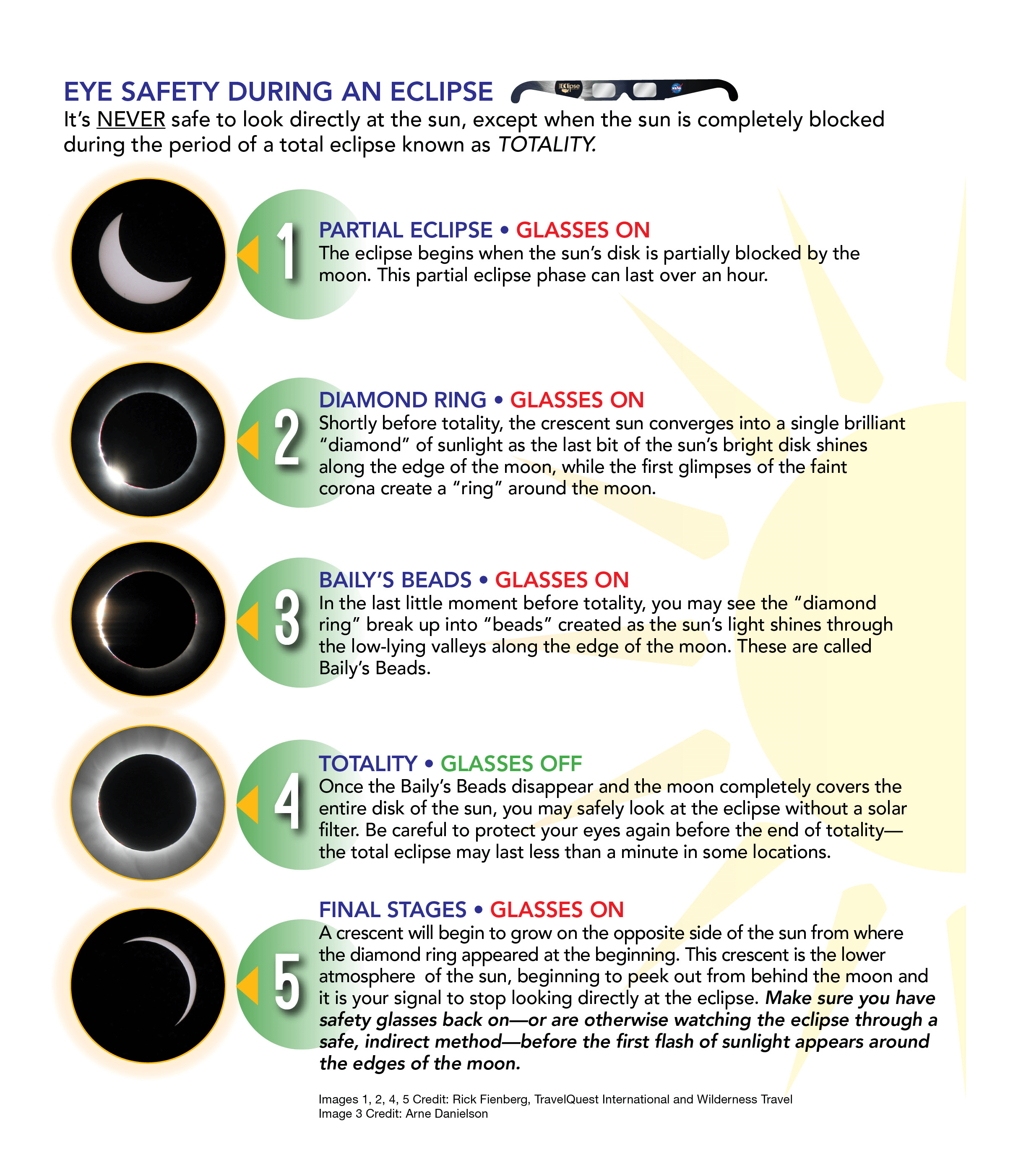
Pinhole projection works for all solar eclipses, but it’s especially great for a partial solar eclipse! You will be able to track the movement of the moon across the sun by looking at the projected shadow.
CREDIT: Music credit: Apple of My Eye by Frederik Wiedmann • Video credit: NASA’s Goddard Space Flight Center/SVS
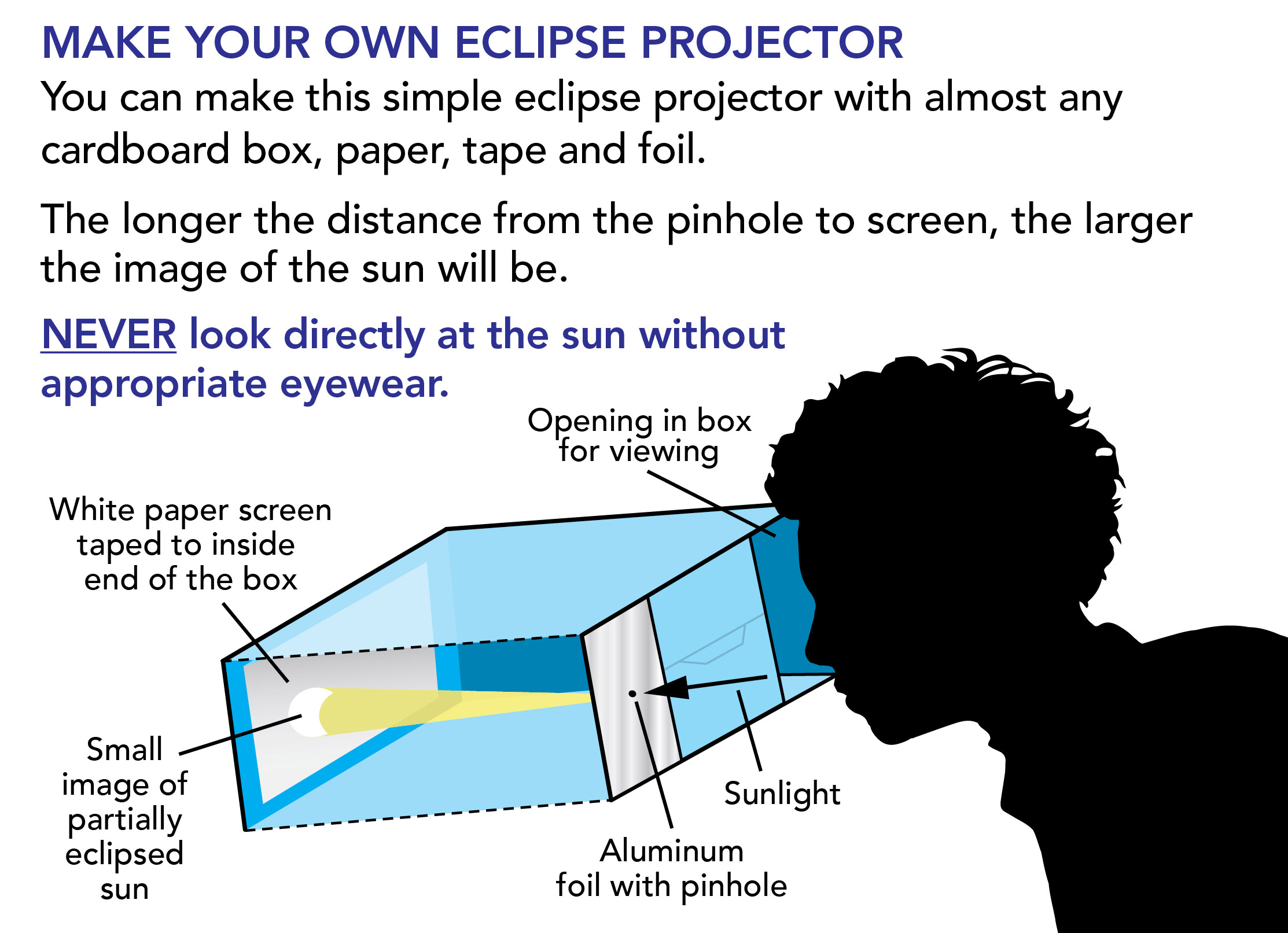
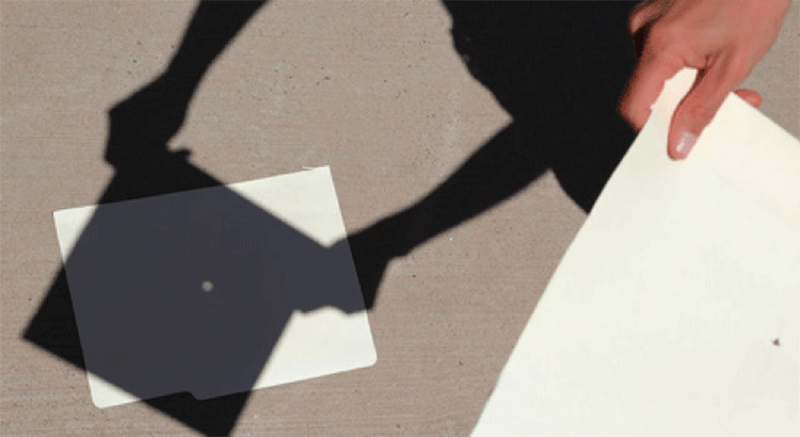
My set up. Solar eclipse projection, lol.#PartialSolarEclipse pic.twitter.com/HwGTprXUHL
— Dawn (@DawnSunrise1) June 10, 2021
You don’t necessarily need fancy equipment to watch one of the sky’s most awesome shows: a solar eclipse.
@DawnSunrise1 shows a smart & easy way to have a hands-free multiple pinhole camera setup! Brilliant!!
With just a few simple supplies, you can make a pinhole camera that allows you to view the event safely and easily.
Before you get started, remember: You should never look at the sun directly without equipment that’s specifically designed for solar viewing. Do not use standard binoculars or telescopes to watch the eclipse, as the light could severely damage your eyes. Sunglasses also do NOT count as protection when attempting to look directly at the sun.
Stay safe and still enjoy the sun’s stellar shows by creating your very own pinhole camera. It’s easy!
- PHOTO CREDIT: Dawn @DawnSunrise1
- See another pinhole camera tutorial here.
